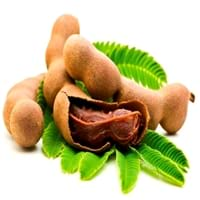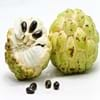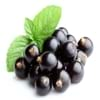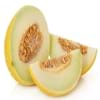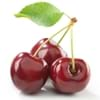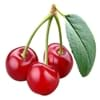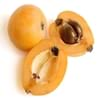Health Benefits
Cancer prevention, Heart care, Regulation of heart rate
Boosts immune system, Boosts respiratory health, Cancer prevention, Digestive aid, Piles treatment
General Benefits
Anti oxidant properties, Anti-inflammatory properties, Boosts immune system, Controls blood pressure, Digestive aid, Strengthens bones
Beneficial in improving nerve function, Protects against parasites and worms, Relieves pain
Skin Benefits
Reduces wrinkles, Skin rejuvenation
Anti-aging benefits, Brightens and lightens complexion, Exfoliates skin, Hydrates skin, Treatment of dark spots
Hair Benefits
Promotes longer and healthier hair, Treatment of dandruff, Treatment of Lice
Prevents hair loss
Allergy Symptoms
Anaphylaxis, Itching, Skin rash, Swelling of face
Abdominal pains, Breathing difficulty, Dizziness, Eczema, Fainting, Hives, Itching, Nasal congestion, Swelling of face, Tingling sensation in mouth, Vomiting
Side Effects
Allergic reaction, Possibly unsafe during pregnancy
Decrease in blood sugar levels, Induces acid reflux, Allergic reaction, Tooth decay, May form gallstones
Best Time to Eat
As a snack in the late afternoon, Don't consume at night and before bed, Morning time (before lunch)
Along with meal, As a snack in the late afternoon, Don't consume at night and before bed, Strictly avoid empty stomach
Vitamin A (Retinol)
Not Available
Vitamin B5 (Pantothenic Acid)
Vitamin C (Ascorbic Acid)
Vitamin K (Phyllochinone)
Not Available
Phytosterol
Not Available
Calories in Fresh Fruit with Peel
Not Available
Not Available
Calories in Fresh Fruit without Peel
Calories in Frozen Form
Not Available
Calories in Dried Form
Not Available
Calories in Canned Form
Not Available
Not Available
Calories in Juice
Not Available
Calories in Jam
Not Available
Calories in Pie
Not Available
Season
Autumn, Spring, Winter
Spring, Summer
Varieties
Andrews, Amarilla, Asca, Baste, Bays, Bayott, Behl, Canaria, Capucha, Deliciosa, Ecuador, El Bumpo, Guayacuyán, Jete, Juniana, Knight, Nata, Popocay, Sander, Smoothey, Tumba, Umbonada, Whaley and White Juliana
PKM 1, Urigam, Hasanur, Tumkur prathisthan, DTS 1 and Yogeshwari
Color
Green, Yellow
Brown, Reddish-brown
Shape
Conical
Curving Cylinder
Soil Type
Sandy loam
Loam, Sandy, Sandy loam, Well-drained
Climatic Conditions
Warm
Humid to dry, Rainfall, Warm to hot climate
Facts about
- Cherimoya is also called as custard apple or chirimoya.
- The word cherimoya came from the Quechua word,'chirimuya',which means 'cold seeds'.
- The cherimoya is called as 'the tree of ice cream'.
- Tamarind is used to prevent body odor.
- African children use the tamarind seeds in games.
- No cases of tamarind toxicity or allergy reported till date.
Other Countries
Argentina, Chile, Colombia, Egypt, Italy, Mexico, Peru, South Africa, United States of America
Africa, Australia, Brazil, China, Mexico, Nigeria, Sudan, Taiwan
Top Importer
United States of America
United States of America
Top Exporter
Spain
Thailand
Botanical Name
Annona cherimola
Tamarindus indica
Synonym
Not Available
Tamarindo, tamarindus
Subkingdom
Tracheobionta
Tracheobionta
Division
Magnoliophyta
Magnoliophyta
Class
Magnoliopsida
Liliopsida
Subclass
Magnollidae
Rosidae
Order
Magnoliales
Fabales
Family
Annonaceae
Fabaceae
Species
A. cherimola
Tamarindus indica
Generic Group
Not Available
Tamarind Sub
Difference Between Cherimoya and Tamarind
We might think that Cherimoya and Tamarind are similar with respect to nutritional value and health benefits. But the nutrient content of both fruits is different. Cherimoya and Tamarind Facts such as their taste, shape, color, and size are also distinct. The difference between Cherimoya and Tamarind is explained here.
The amount of calories in 100 gm of fresh Cherimoya and Tamarind with peel is Not Available and Not Available and the amount of calories without peel is 75.00 kcal and 239.00 kcal respectively. Thus, Cherimoya and Tamarind belong to Low Calorie Fruits and High Calorie Fruits category.These fruits might or might not differ with respect to their scientific classification. The order of Cherimoya and Tamarind is Magnoliales and Fabales respectively. Cherimoya belongs to Annonaceae family and Tamarind belongs to Fabaceae family. Cherimoya belongs to Annona genus of A. cherimola species and Tamarind belongs to Tamarindus genus of Tamarindus indica species. Beings plants, both fruits belong to Plantae Kingdom.

